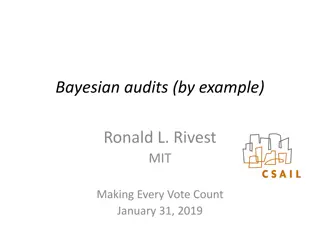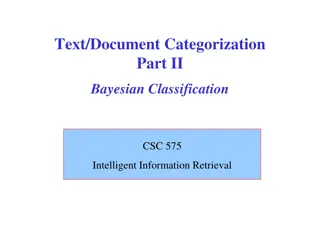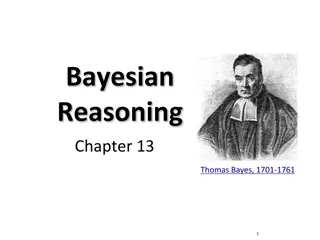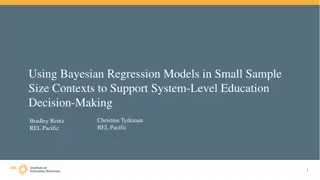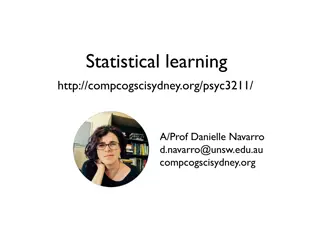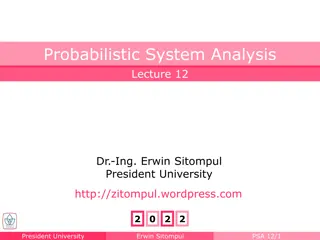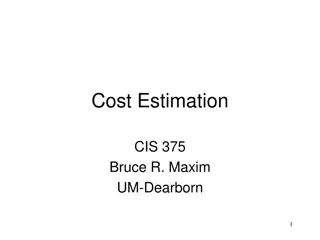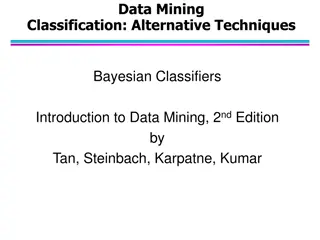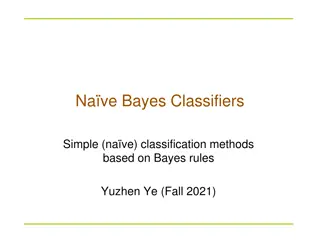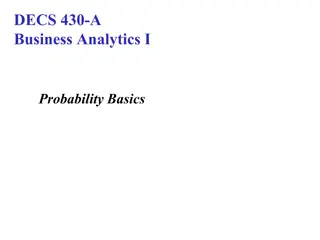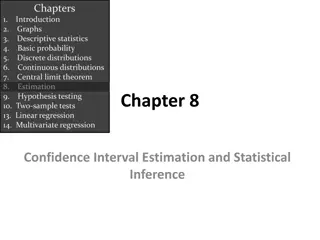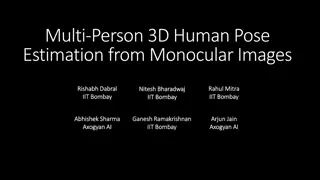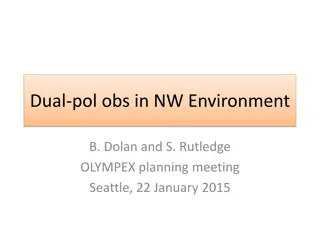Understanding Bayesian Methods for Probability Estimation
Bayesian methods facilitate updating probabilities based on new information, allowing integration of diverse data types. Bayes' Theorem forms the basis, with examples like landslide prediction illustrating its application. Prior and posterior probabilities, likelihood, and Bayesian modeling concepts are explained, along with a comparison to frequentist methods.
Download Presentation

Please find below an Image/Link to download the presentation.
The content on the website is provided AS IS for your information and personal use only. It may not be sold, licensed, or shared on other websites without obtaining consent from the author. Download presentation by click this link. If you encounter any issues during the download, it is possible that the publisher has removed the file from their server.
E N D
Presentation Transcript
First, a question Can we find the perfect value for a coefficient? namNm15
Bayesian Methods Allow updating an existing probability when additional information is made available Allows flexibility when integrating different types of data to create probabilities Growing in popularity to solve real problems Provides a method to update beliefs Argued to be closer to how we think namNm15
Bayes' Theorem ? ? ? =?(?|?) ?(?) ?(?) The probability of A, given B, is the probability of B, given A, times the probability of A divided by the probability of B. Thomas Bayes first suggested using this equation to update existing probabilities namNm15
Example: Landslides P(A|B): Probability of a landslide given that it is raining Unknown P(A): Probability of a landslide Number of days with landslides per year / 365 P(B): Probability of rain Number of days with rain per year / 365 P(B|A): Probability of rain given a landslide Number of days it has rained and had a landslide divided by the number of days with landslides namNm15
Definition ? ? ? =?(?|?) ?(?) ?(?) P(A|B) posterior probability P(A) prior probability, probability of A before B is observed P(B|A) probability of observing B given A. P(B) probability of B namNm15
Bayesian Modeling Likelihood ? ? ? =?(?|?) ?(?)?(?) Posterior Distribution Prior Data Distribution namNm15
Priors Informative prior A prior that is based on data Uninformative prior objective prior Principle of indifference: when in doubt, assign equal probabilities to all outcomes Likelihood ? ? ? =?(?|?) ?(?)?(?) namNm15 Posterior Distribution Prior Data Distribution
Bayesian vs. Frequentists namNm15
Bayesian Continued Hierarchical Bayes Bayesian equations used to predict coefficients in other equations in levels Bayesian networks Networks of equations/distributions namNm15
Bayesian Networks namNm15 https://towardsdatascience.com/introduction-to-bayesian-networks-81031eeed94e
Spatial Bayesian namNm15 Effects of land use changes on ecosystem processes, carbon storage and climate change mitigation Martin Herold, M. Garc a Esteban, Alvaro Ivan Lau Sarmiento, Alvaro Ivan Lau etc.
Tools WinBUGS original Bayesian modeling package (worst UI ever!) GeoBUGS Spatial Bayes? Laplace's Demon - a "complete environment for Bayesian inference", their web site also has some very nice introductory material (and some nice merchandise!). R Packages for Bayes more on this namNm15
R for Bayes R2WinBUGS interface to WinBUGS JAGS Designed to work with R rjags interface to JAGS coda library to analyze MCMC results Stan faster and larger models Rstan R library INLA? Resources R and Bayesian Statistics namNm15






